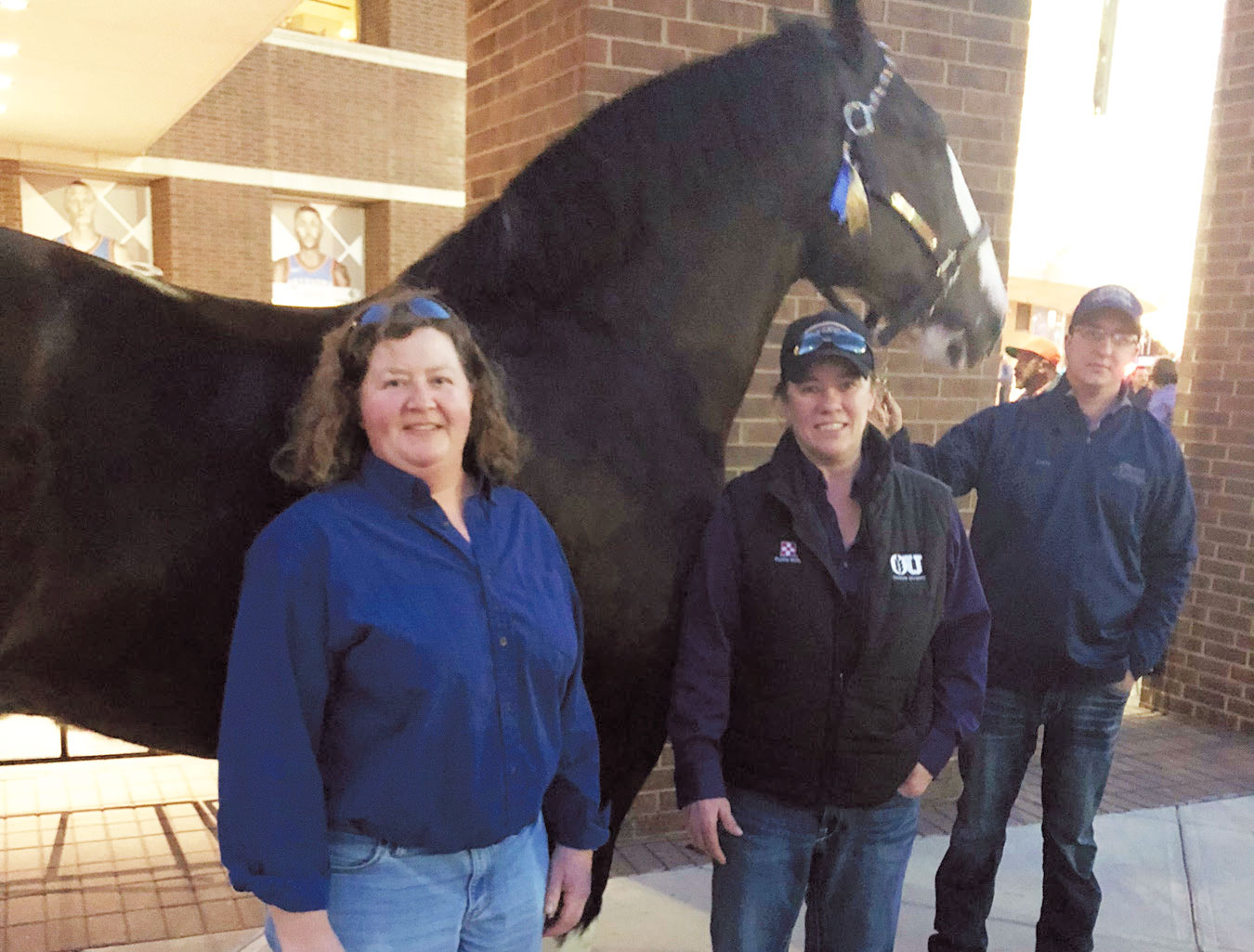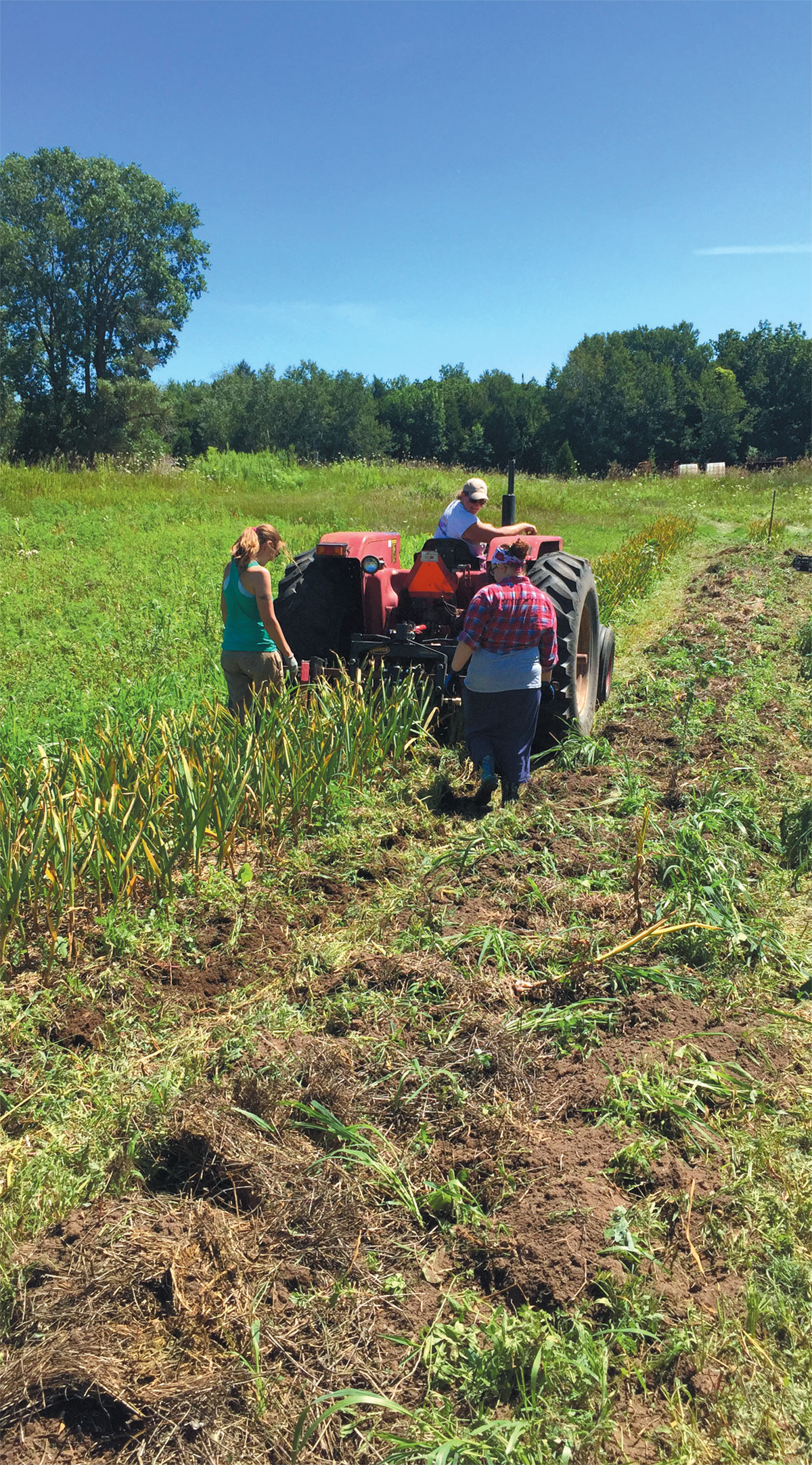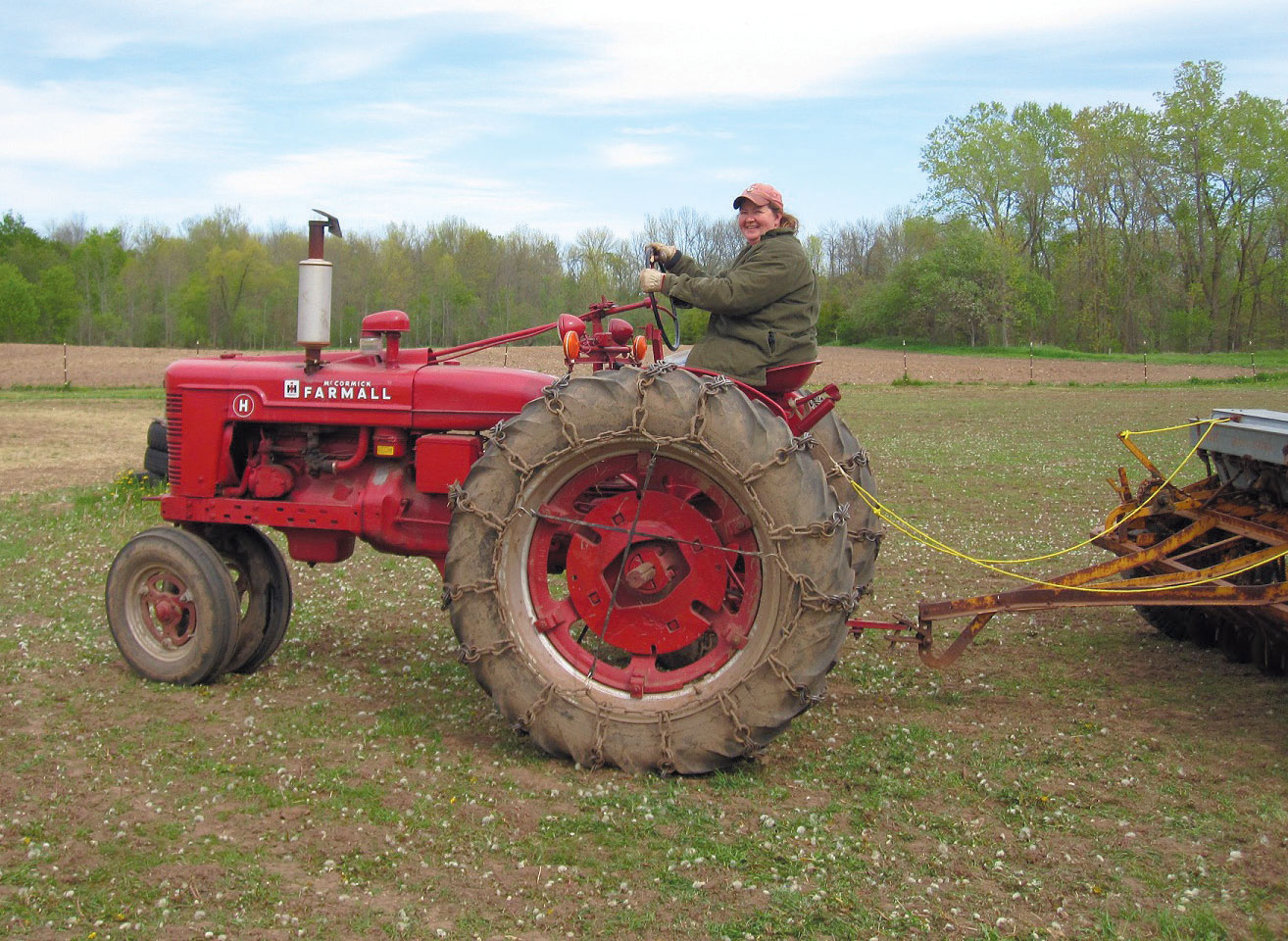Women’s Touch is Working at Sleepy Hollow Farms

As a patriarchal house of cards tumbled last year and the #MeToo movement and its supporters emerged, women plowed forward. We’ve been digging our heels in for centuries. It’s what we do. So, when CNN officially declared 2018 the year of the woman, farmers like Suzi Sevcik and Kelly Rortvedt took note, all the while relishing another beautiful day in their idea of paradise—Sleepy Hollow Farms in Kewaunee County.
“Kelly and I have a saying. Sometimes you just have to sit back and watch,” Suzi refers to how femininity finesses an otherwise male-dominated profession. “I grew up with all those guys. I was in FFA with them. To this day, they know me as ‘Mike’s daughter.’” Needless to say, she’s no outsider and embraces her agrarian culture wholeheartedly.
When it comes to the physical demands female farmers face, Suzi laughs, “It’s not only about being female, it’s also about getting older.” Suzi, 46, and her partner Kelly, 52, work with a “smarter, not harder” mentality. Suzi recently purchased a 1930s Farmall A tractor that has a belly-mounted cultivator, cutting her work load considerably.
“You either use your brains or you use your feet,” winks Rortvedt. Still, these women aren’t afraid to admit when they need help. “Sometimes we do need a guy. Our neighbors are great. When we need a little muscle, we call ‘em up, give ‘em a couple of beers and work gets done,” Suzi says with a smile.
‘I guess I never thought about
it as being a woman farmer…
I’m just a farmer.’
— Suzi Sevcik,
Sleepy Hollow Farms
Time for the CSA
The Farmall is actually third in Sleepy Hollow’s fleet. Before that, everything was done by hand. After a few years of digging more than an acre of garlic manually, hands and knees collectively cried, “Uncle!” Queue the International Harvester 884 that has an under-cutter working in a 4-foot trench that’s 5 rows wide. This baby also freed up time to work the additional acre of CSA veggies on their 34-acre farm.
So, how did they get started?
She and Kelly owned and lived on about 5 acres of land where they also boarded horses for years. That is, until about six years ago. That’s when it all changed …
Suzi and Kelly had just built an indoor horse arena when a neighbor announced they were selling their farm.
“It was not great timing,” Suzi remembers. The couple was faced with a dilemma. Either they could buy that land and avoid disrupting their peaceful pasture, or they could close their drapes and adjust to new neighbors building right next door.
The couple pooled their resources and bought the 29 acres.
“It was perfect for us. There was 12 acres of field, 10 acres of woods and the rest was conservation land that I started the CSA garden on,” Suzi describes.
The daughter of dairy farmers smiles, “I joke with my dad that he was “Chemic- Ali” back in the day.” Like many of her younger colleagues, Suzi turned to a more natural path, but cherishes her roots.
“I grow the food the way I want to eat it, “ she describes her natural growing practice. She plants species to attract species. Here, the monarchs feast on milkweed and other flowering plants. But, she’ll be the first to say, her 8½ foot fence is her best defense against her No. 1 predator – deer. She tries to grow more of what they don’t eat – GARLIC. With more than a half-dozen varieties, this is a top Sleepy Hollow crop.
Alongside the CSA, Kelly’s KR Ranch boards about 14 horses at any given time. The ranch produces another top crop of what they like to call “black gold.” The composted horse manure is “literal black earth,” according to Suzi, who jokes about living on a gravel pit. She says that the natural sandy conditions offer a reasonably pest-free condition, but the added compost provides the desperately needed natural balance.
It became clear that the farmers market model wasn’t for them very early on. Suzi explains that there’s just not enough time to work the fields and give customers the time they like at market. Instead, Sleepy Hollow Farms garners an online following that allows her to work full-time at Marco in Green Bay.
“Farmers markets have value, but when you’ve been working all week and then you spend Friday nights prepping, and then it rains on Saturday … it’s kind of hard to take,” she explains.
The women have always loved that CSA seed money, but they’ve also felt the pressure to produce no matter what.
“If all you’re doing is working your tail off, that’s not any fun,” Suzi says. After 6 years of CSA, Sleepy Hollow Farms is becoming a “virtual farm stand” this year.
Here’s how it will work:
Customers can expect a produce availability email on Thursdays with order deadlines on Saturday. They may choose to pick up on Mondays in Green Bay or on the farm on Wednesdays. That means if you want a bushel of radishes, as long as it’s available, you’ll get those radishes. If you buy a gift certificate at the beginning of the growing season, you’ll have priority access.
It’s too soon to tell, but Suzi and Kelly aren’t looking for a mortgage lifter at this point.
“I enjoy doing it, and growing a quality product. If it pays for a tractor … We’re always looking for ways to do things better and do things better for the earth. It’s a journey and there’s no finish line for us. We look forward to sitting on the porch, drinking a beer and watching the sunset,” Suzi ponders.

Garlic harvest. Contributed photo
Tips from Sleepy Hollow
It won’t be long until Suzi’s garlic starts throwing scapes. It’s her favorite “hidden gem” of the garden. She recommends tossing them in olive oil, salt and pepper and throwing them on the grill alongside a juicy steak. Chop up the leftovers (if there are any) in tomorrow morning’s skillet of eggs. How about preserving well beyond their usual winter sprout?
She recommends to simply peel, slice and dry the garlic cloves. Grind some of those dried slices in a coffee grinder reserved specifically for garlic—because no one wants garlic coffee! Mix the garlic powder with butter for the best garlic toast this side of the Atlantic.





